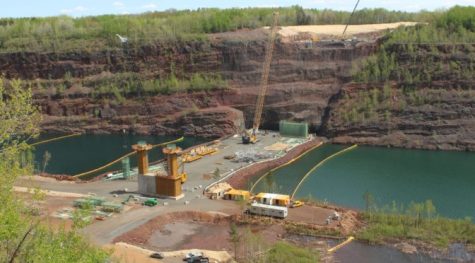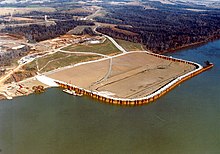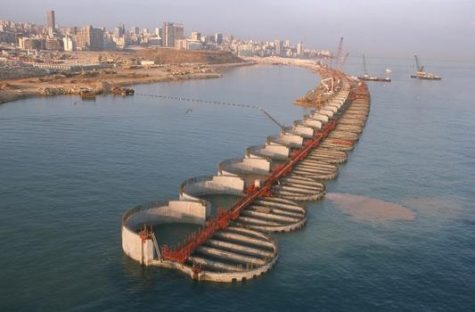How are Bridge Foundations Built Over Water?
Bridges are magnificent pieces of engineering. While most of us have driven over them numerous times, we don’t think of them much. How are they built over water? How do they build foundations underneath them? Well, it all starts with building the base of the bridge and building up from there. When the water is shallow, construction is made easier. The first thing that has to be built is a temporary foundation. Piers are then built on top of this to support the upper structure. The bridge is then able to start being built.
 However when the water is deep, other techniques are needed. There are 3 main methods that are used to construct bridges in deeper water. These 3 methods are battered piles, caissons, and cofferdams. Batter piles are poles that are stuck into the soil underneath the water. In order to make the piles firmer and stronger, they are hammered into the water until they turn outward or inward at an angle. The machine used to insert the piles are called pile drivers. Once this is complete, the piles are capable of providing the foundation to support the bridge. The bridge can then start being built on top of it.
However when the water is deep, other techniques are needed. There are 3 main methods that are used to construct bridges in deeper water. These 3 methods are battered piles, caissons, and cofferdams. Batter piles are poles that are stuck into the soil underneath the water. In order to make the piles firmer and stronger, they are hammered into the water until they turn outward or inward at an angle. The machine used to insert the piles are called pile drivers. Once this is complete, the piles are capable of providing the foundation to support the bridge. The bridge can then start being built on top of it.
 The second method is building cofferdams. Cofferdams are temporary enclosures that are made by piling driving sheet into the water. This forms a water tight fence surrounding the rest of the structure. Once the sheet piles have been placed into the water, the water is pumped out of the enclosure. This creates a dry working environment so that the work can be carried out safely. The dry enclosure can sometimes act as dry land which allows the job to get done quicker. Not only does this make building the foundation easier but it makes building the structure of bridge simpler.
The second method is building cofferdams. Cofferdams are temporary enclosures that are made by piling driving sheet into the water. This forms a water tight fence surrounding the rest of the structure. Once the sheet piles have been placed into the water, the water is pumped out of the enclosure. This creates a dry working environment so that the work can be carried out safely. The dry enclosure can sometimes act as dry land which allows the job to get done quicker. Not only does this make building the foundation easier but it makes building the structure of bridge simpler.
 The final method that is used to build bridges over water are caissons. A caisson is shaped like a cube and is open at both ends. Most of the time they are constructed on land. After they are constructed, they have to be put into position out in the water and sunk. The upper edge is the only part of it that has to remain above water level. Once the caisson reaches the proper depth, concreate is poured to cover the bottom. The method used for building bridges foundations is decided based on the condition of the site and is a very important part. Next time you’re driving over a bridge, you’ll have a little better understanding of how the foundation of it was built.
The final method that is used to build bridges over water are caissons. A caisson is shaped like a cube and is open at both ends. Most of the time they are constructed on land. After they are constructed, they have to be put into position out in the water and sunk. The upper edge is the only part of it that has to remain above water level. Once the caisson reaches the proper depth, concreate is poured to cover the bottom. The method used for building bridges foundations is decided based on the condition of the site and is a very important part. Next time you’re driving over a bridge, you’ll have a little better understanding of how the foundation of it was built.











